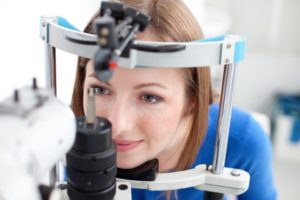Posted by: Georgia Eye Physicians and Surgeons in Latest News
Prescription vision correction is more common than you might think. According to the Vision Council of America, an estimated 75 percent of the adult population worldwide uses vision correction products, and approximately 64 percent of them wear glasses. Regular wearers of glasses and contacts are all no doubt familiar with the standard vision screening, or routine eye exam, to determine or update your prescription, but fewer are aware that this regular checkup is generally not enough to maintain optimal vision health. At Georgia Eye Physicians and Surgeons, Dr. William Segal and Dr. Marc Lay also strongly recommend that patients undergo comprehensive eye examinations in order to diagnose and treat eye problems early, before they can cause long term difficulties or permanent vision loss.

Although a routine exam does involve a cursory inspection of the eye itself, as well as general tests to ascertain whether there are any concerns that warrant immediate attention, it is relatively quick and so lacks the thorough, medical focus of a full comprehensive eye exam. Many serious eye problems, like glaucoma or cataracts, develop gradually over the course of several years. If they can be caught and diagnosed early there are options for treatment that may not be available once the condition has had an opportunity to progress. This is the primary reason why regular comprehensive eye exams are so important. Using a series of highly specialized tests and a thorough examination of the eye’s interior, Dr. Segal or Dr. Lay can evaluate the health of the eyes and, more importantly, track subtle changes over time, allowing them to identify emerging conditions that have not yet started to affect the vision and which a more routine screening might miss.
The American Academy of Ophthalmology (AAO) recommends that all men and women undergo a complete comprehensive eye exam at least once between the ages of 20 and 29, at least twice between the ages of 30 and 39, and a baseline eye disease screening at age 40, the time when early signs of disease and changes in vision may start to occur. Based on the results of this baseline screening, an ophthalmologist will prescribe the necessary intervals for follow-up exams, but seniors age 65 and over should have complete eye exams every one to two years to check for cataracts, glaucoma, age-related macular degeneration, diabetic retinopathy and other eye conditions. If you have questions about the function or diseases of the eye, or would like to schedule an appointment for an eye exam, please contact Georgia Eye Physicians and Surgeons today to make an appointment. Be sure to follow us on Facebook, Twitter, and Google+ for more tips for healthy eyes.

